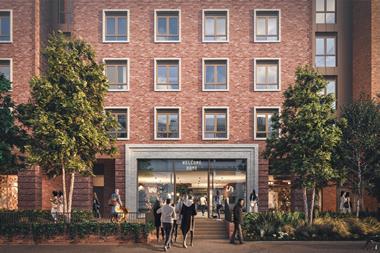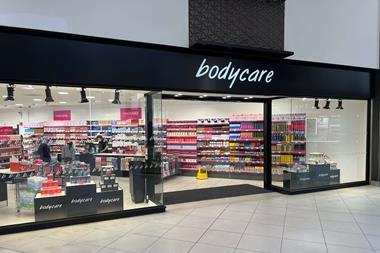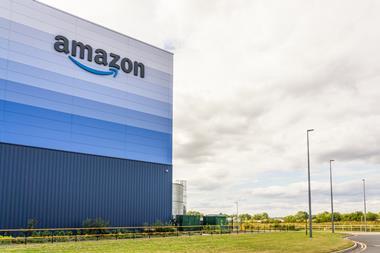Trips to shopping centres have long been popular Saturday entertainment. Regarded as temples of convenient consuming, shoppers can while away hours buying anything they need.
Retail parks, on the other hand, conjure up a different image. What started as bleak, utilitarian spaces were populated by draughty units selling timber and tiles to the white van man. And while their popularity exploded because of their easy accessibility and the growth of DIY, few people ever saw them as places to spend their precious leisure time.
But now many retail parks are no longer just about furniture and DIY and with the explosion of fashion outlets, there is an expectation that the experience needs to be better. Retailers want property owners to understand that, for parks to be truly competitive shopping destinations, customers’ needs must be properly catered for with places to eat, toilets, cashpoints and other amenities that could increase footfall and prolong dwell time.
British Land head of retail Andrew Jones says the quality of facilities is increasingly important. “By having better facilities, from cafés to cashpoints, we can create an environment that will increase shoppers’ dwell time and improve sales densities for our retailers. Our aim is to benefit the retailers’ trading and, therefore, our opportunities to generate rental growth.
“Only recently, within the past two years, have we been adding facilities such as toilets, restaurants, coffee bars, cash points and crèches. There are now outlets of Starbucks, Costa and Greggs, to name but a few, on our parks.”
Jones also acknowledges the trend for more high-street retailers in parks. “The biggest single initiative is to extend the number of retailers on offer,” he says. “Tenant mix is important. We want more high street occupiers in smaller units. Some retailers have more mass appeal than others. We could fill 100,000 sq ft with a large DIY store, but it will greatly increase the dwell time of customers if we split that same space into 10 units of 10,000 sq ft. We are looking to improve the tenant mix. If we let to Marks & Spencer and Boots it attracts far more people. We are interested in Open A1 planning consent.”
Food outlets require A3 planning consent. This can be more difficult to obtain. But an A1 planning consent allows a retailer to sell 80 per cent non-food items, which enables retailers such as Borders to sublet space to coffee chains.
An improved food offer is also on the menu at Britain’s retail parks. “Once it started and ended with McDonald’s, then other, similar restaurants, such as Burger King. Now it starts with coffee shops and moves on to restaurants of a higher quality, such as Pizza Express and Nandos,” says Jones.
He believes it is too early to tell if better catering outlets are making a financial difference or whether customers are actually staying longer. The evidence, so far, is anecdotal.
But Jones says that when he goes shopping with his wife, they are more likely to stay longer if he can have a coffee in Starbucks and read the paper. He adds: “British Land is a big supporter of Borders because its stores all have Starbucks in them and coffee shops are like créches for husbands.”
Thorntons, too, is ramping up the expansion of its café format. Thorntons head of cafés Damian Austin feels that retail parks have improved their offer over the past few years. “They are now looking at the total experience the customer receives and wants, and this includes food and drink. With the growing café culture in the UK, landlords see Thorntons as a premium brand whose profile fits this requirement,” says Austin.
He claims that landlords believe the presence of a Thorntons benefits the park as a whole. “Customer dwelling times tend to be longer,” he says. “The customer profile fits the consumer type Cafe Thorntons is targeting and it is seen as a consumer offer, which is exciting and different to the competition.”
Peas in a pod
Over the past few years, The Junction has considered innovative solutions to attract shoppers to its parks and increase dwell time, including the Pod concept and appropriate additional income streams. The Pod features services including toilets, community area, public seating and ATMs, as well as the management suite, which offers shoppers and retailers direct access to customer service operatives.
The Pod at The Junction, St Andrew’s Quay Retail Park, Hull has proved popular with retailers and customers, according to the operator, and the arrival of tenants such as Starbucks, Jessops, Carphone Warehouse and Subway has revamped the tenant mix.
The company is also looking to add facilities that will attract shoppers and generate additional income, but also reduce tenant costs. Ideas include food and ice-cream outlets, car washing, and lamppost and billboard advertising that is complementary to retailers. Of the revenue generated, a proportion is returned to the tenants either through covering the cost of marketing initiatives that benefit the tenant or as a credit to their service charge.
The Junction managing director John Gatley says: “The provision of these facilities will continue to be a feature of our strategy, although each concept will be different and sympathetic to its location.”
Beyond catering, some retail park landlords have tried introducing other leisure elements. But Jones disagrees that retail parks should include sports or leisure facilities. “Leisure parks and retail parks are very different things. Sometimes, retail parks have cinemas or climbing walls in them, unintentionally as it were. But this will only be because planning consent was granted reluctantly with the proviso that facilities such as cinemas were provided for the local community. Cinemas will not attract customers for retailers because most people go to the cinema in the evenings when shops are closed.”
With the market slowing down, it is more important than ever for landlords to give shoppers a compelling reason to visit their retail parks. After all, if the experience is not up to scratch, shoppers may be more inclined to go online and, if that happens, it will be the landlords, not the retailers, that suffer as tenants decide to pull out. It is a challenge to which progressive landlords are now starting to rise.


























No comments yet